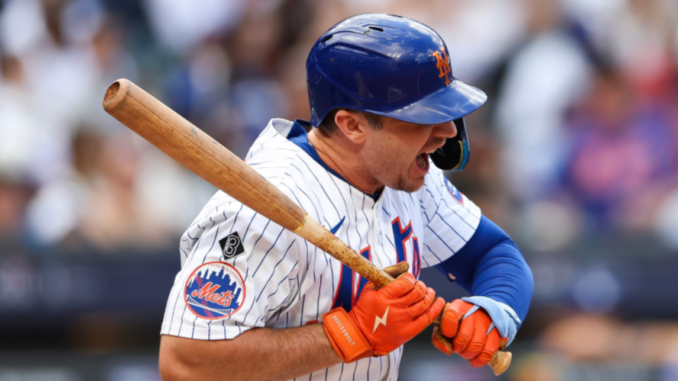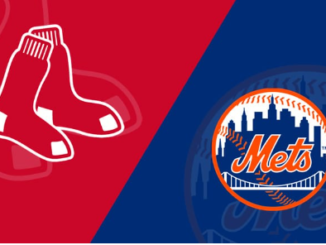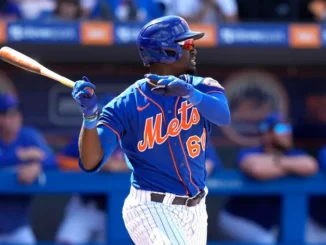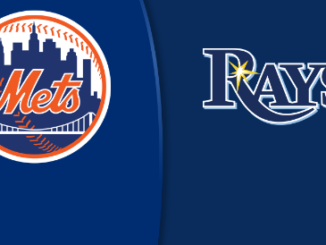
The New York Mets and their star first baseman, Pete Alonso, are in the midst of tense contract negotiations. Last week, Mets owner Steve Cohen admitted that the process has been “exhausting.” With few options remaining on the free-agent market—aside from the Blue Jays and Angels—the most logical outcome is Alonso staying in Queens, where he is just 27 home runs away from becoming the franchise’s all-time leader. Given that he has never hit fewer than 34 homers in a full season, the milestone seems well within reach.
However, discussions between Alonso and the Mets have been anything but smooth. In June 2023, New York offered him a seven-year, $158 million deal, which was turned down by his former agents at Apex Baseball. Alonso has since enlisted super-agent Scott Boras, who is now handling negotiations.

Following the 2023 season, MLB Trade Rumors projected Alonso would land a five-year, $125 million contract, while ESPN predicted six years and $159 million. The Athletic was even more optimistic, estimating a seven-year, $189 million deal. Yet, reports indicate that the Mets’ current offer stands at just three years and $70 million.
The discrepancy raises questions—what went wrong? Forbes analyst Wayne McDonnell has broken down Alonso’s value, but at this stage, the debate seems to have shifted from financial worth to personal pride. After committing $765 million to Juan Soto in December, Cohen appears unwilling to be strong-armed by Boras.
Despite the stalemate, a practical solution may already exist—one modeled after the inventive contract the Seattle Mariners gave Julio Rodríguez in 2022. While the specifics of Rodríguez’s deal aren’t the focus here, its structure offers a roadmap for a potential Alonso agreement.
Alonso seeks a long-term contract, believing he will age well into his 30s. The Mets, however, are hesitant to commit to a slugger who lacks positional flexibility, especially with an aging right fielder on a lucrative contract and the emergence of Mark Vientos as a first-base option.
These factors likely explain why New York’s initial seven-year offer shrank to three years. But there’s a way to bridge the gap—a deal that safeguards both sides while rewarding Alonso for continued production.
A possible structure could look like this:
- The Mets slightly increase their offer from three years, $70 million to three years, $75 million ($25 million annually).
- A fourth year at $25 million would automatically vest if Alonso meets any of the following criteria over the first three seasons: (1) 435 games played, (2) 1,850 plate appearances, or (3) a top-15 MVP finish in Year 3.
- If Alonso finishes in the top 15 of MVP voting in Years 2 and 3—or in the top 10 in Year 3—Years 4 and 5 would vest at $27.5 million annually.
- If Alonso wins an MVP award in Years 3, 4, or 5, a sixth year vests at $30 million.
Additionally, the contract could include performance-based incentives similar to Rodríguez’s deal:
- World Series MVP: $100K
- LCS MVP: $50K
- Silver Slugger: $50K
- Gold Glove: $50K
- All-Star selection: $25K

At a minimum, if Alonso stays healthy and productive, the contract would be worth four years, $100 million. If he continues to perform at a high level, it could quickly escalate to five years, $130 million, and if he excels, six years, $160 million—just shy of Freddie Freeman’s 2022 contract with the Dodgers, but without deferred payments.
Scott Boras is one of the most skilled negotiators in sports. Steve Cohen has the resources and analytical expertise to structure a creative deal. Mets president David Stearns has experience crafting contracts of this nature. Re-signing Alonso shouldn’t be this complicated.
It’s time for the Mets to bring back the Polar Bear. Show him the respect he deserves while protecting the team’s financial flexibility. This deal could and should be a win-win for both sides.



Be the first to comment